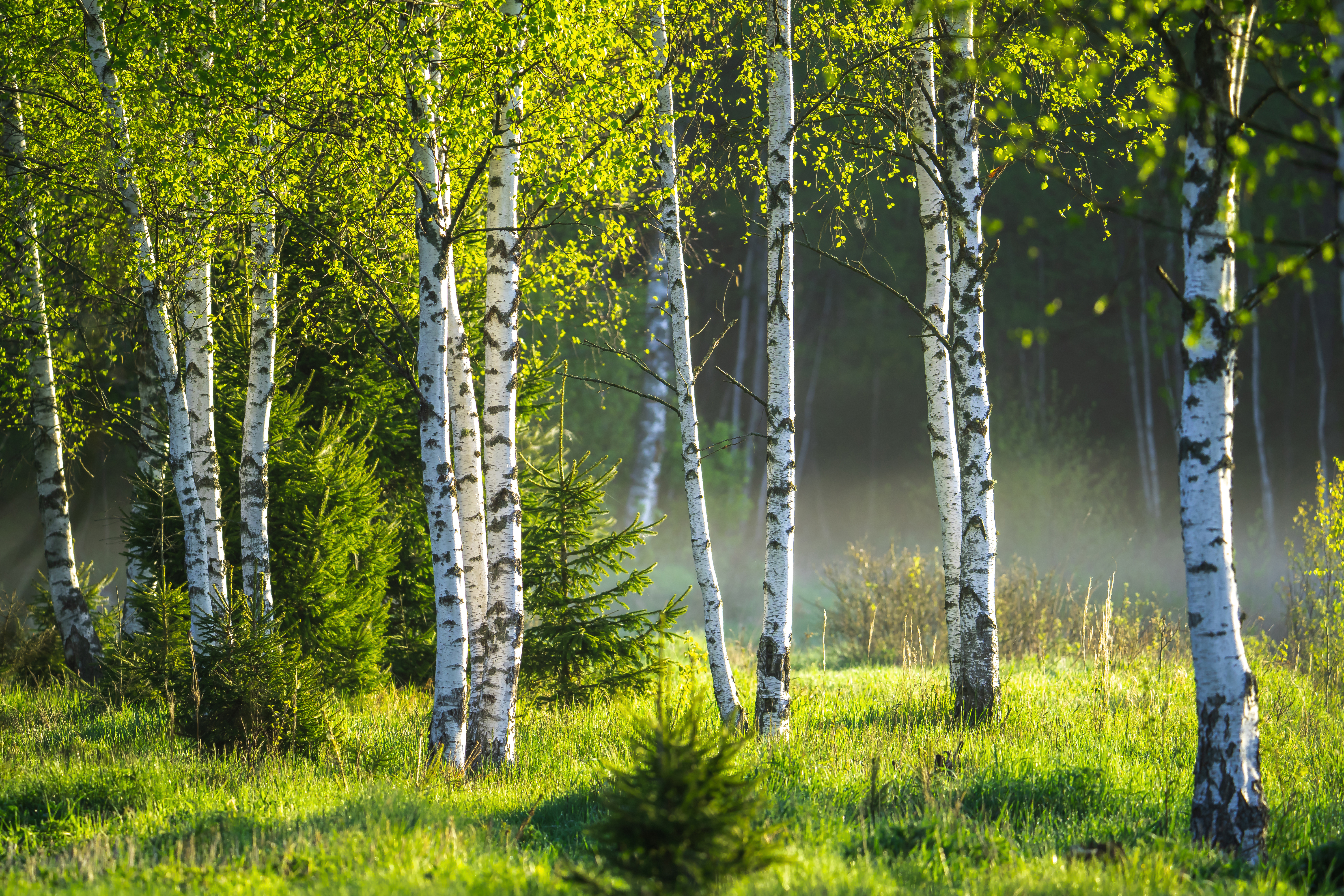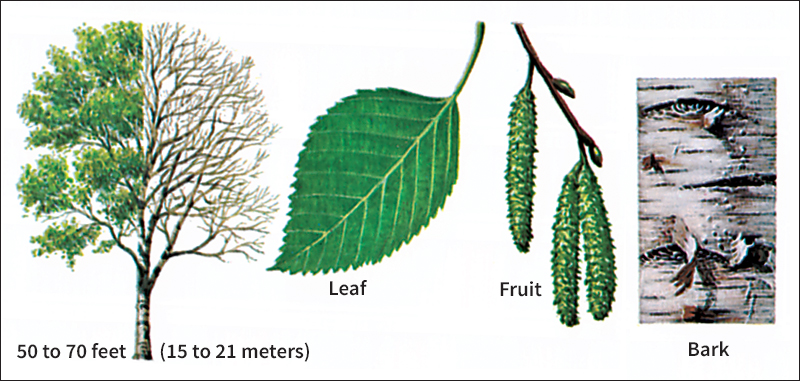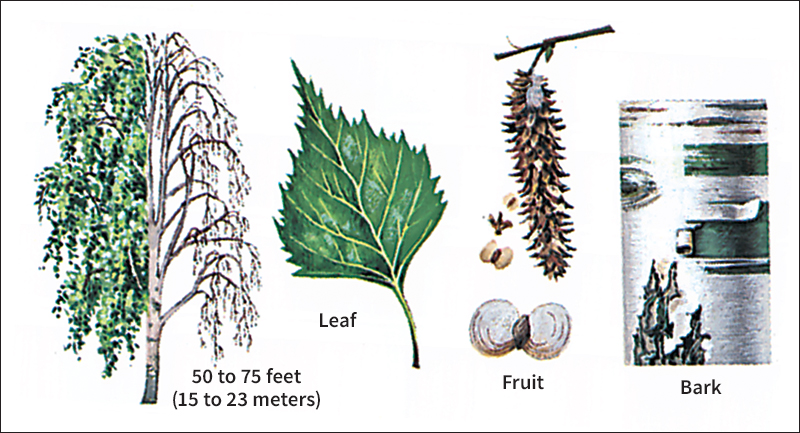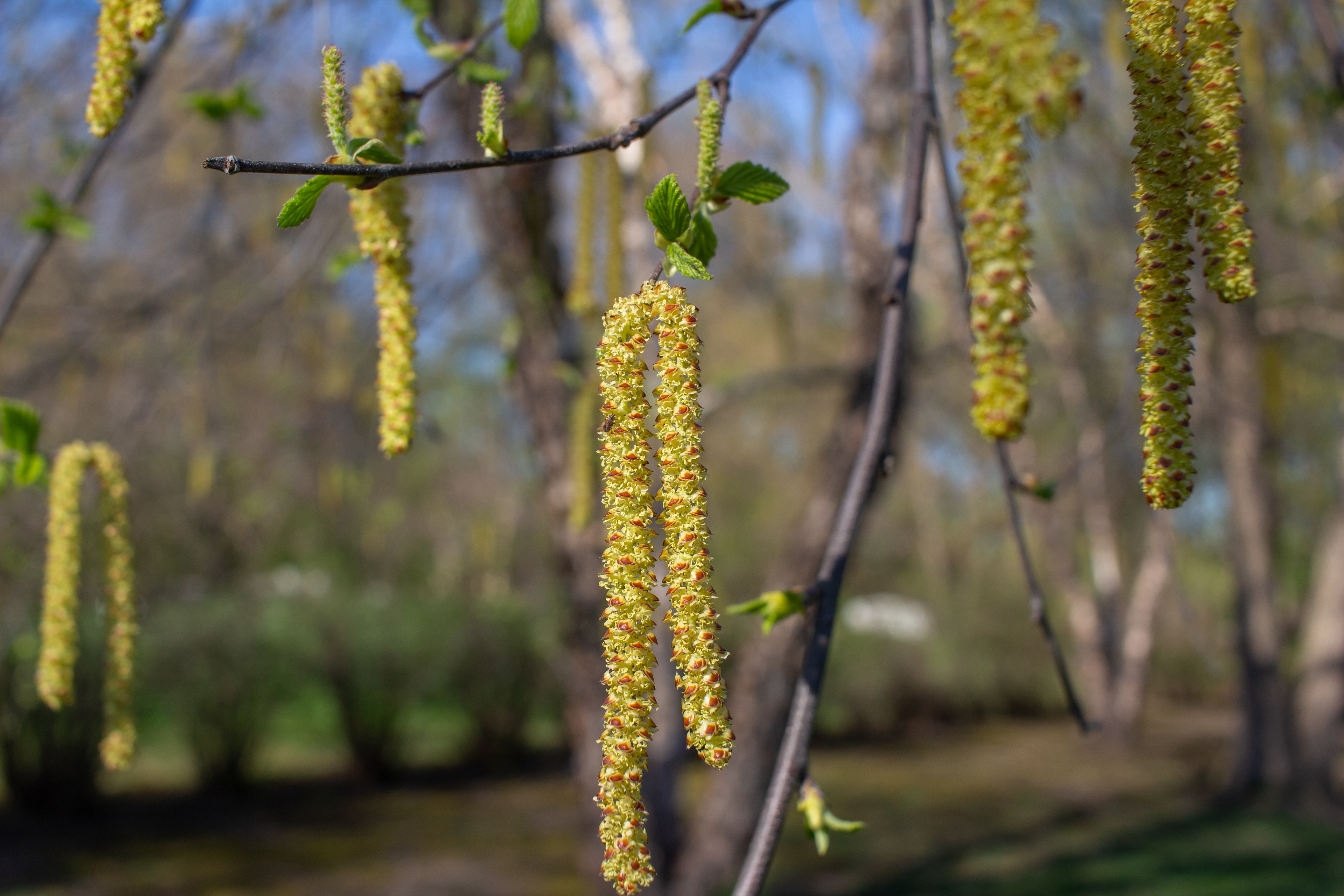Birch is the name of a group of about 40 slender trees and shrubs of North America, Europe, and Northern Asia. They have a thin bark that peels in horizontal layers. Some birches have bark which separates into sheets almost like paper. Birches produce long catkins (scaly spikes) which contain tiny flowers. The closed male catkins appear in the autumn, the female ones the following spring. Birch trees may grow in pairs or clusters. Their leaves grow alternately on the twig. Birch nutlets are small and grow in a cone.

Paper birch
has a bark that comes off in strips. The bark is thin and light enough to write on. Paper birch is also called white birch. Sometimes it is called canoe birch, because the Indians used its bark to make birchbark canoes. Indians still make ornaments and small baskets of birchbark.
Paper birch grows 60 to 80 feet (18 to 24 meters) high. It has a few erect branches and many small horizontal ones. It grows in Canada as far north as the tundra (treeless plain), in the northern United States, and in the southern Appalachians. The European white birch grows in northern Europe and has a variety called the weeping birch. Siberians collect the sap of the weeping birch in spring to make syrup.

Yellow birch,
sometimes called silver birch, has yellowish or dark-gray bark when fully grown. The young twigs have bronze bark. The yellow birch is from 50 to 75 feet (15 to 23 meters) tall and has a broad, round top. Its bark grows in thin layers which often break and form loose ends, making the tree look ragged. The yellow birch grows in the Canadian province of Newfoundland and Labrador, as far west as Minnesota, and as far south as North Carolina and Tennessee. Yellow birch is good for timber and for making furniture.

River birch
is sometimes called the red birch. It grows along the banks of rivers, ponds, and marshes. The river birch grows in Massachusetts, as far south as Florida, and as far west as Texas. The young river birches have salmon-pink bark. Later, the bark may turn almost black. The river birch is a medium-sized tree 50 to 60 feet (15 to 18 meters) high. It is the only typical birch of the South.

Sweet birch
is sometimes called the cherry birch, or black birch. When full-grown, it is between 60 and 80 feet (18 to 24 meters) tall and has a rounded top. Its branches are slender, with delicate twigs which have a wintergreen flavor like that of the yellow birch. Sweet birch grows in Maine, as far south as Georgia, and as far west as Michigan. Its wood is dark, hard, and close-grained. Sweet birch is valuable for making furniture and for interior finish.
Gray birch
is a small graceful tree which seldom grows higher than 40 feet (12 meters). It grows along the Atlantic Coast from Nova Scotia as far south as Delaware and the Blue Ridge Mountains and northwest as far as Lake Ontario. The gray birch has a hard grayish-white bark. The layers of bark grow tightly together, but they can be separated. Dark, V-shaped patches appear on the bark just below the branches. Gray birchwood is used for firewood and in making spools, shoe pegs, and wood pulp.
